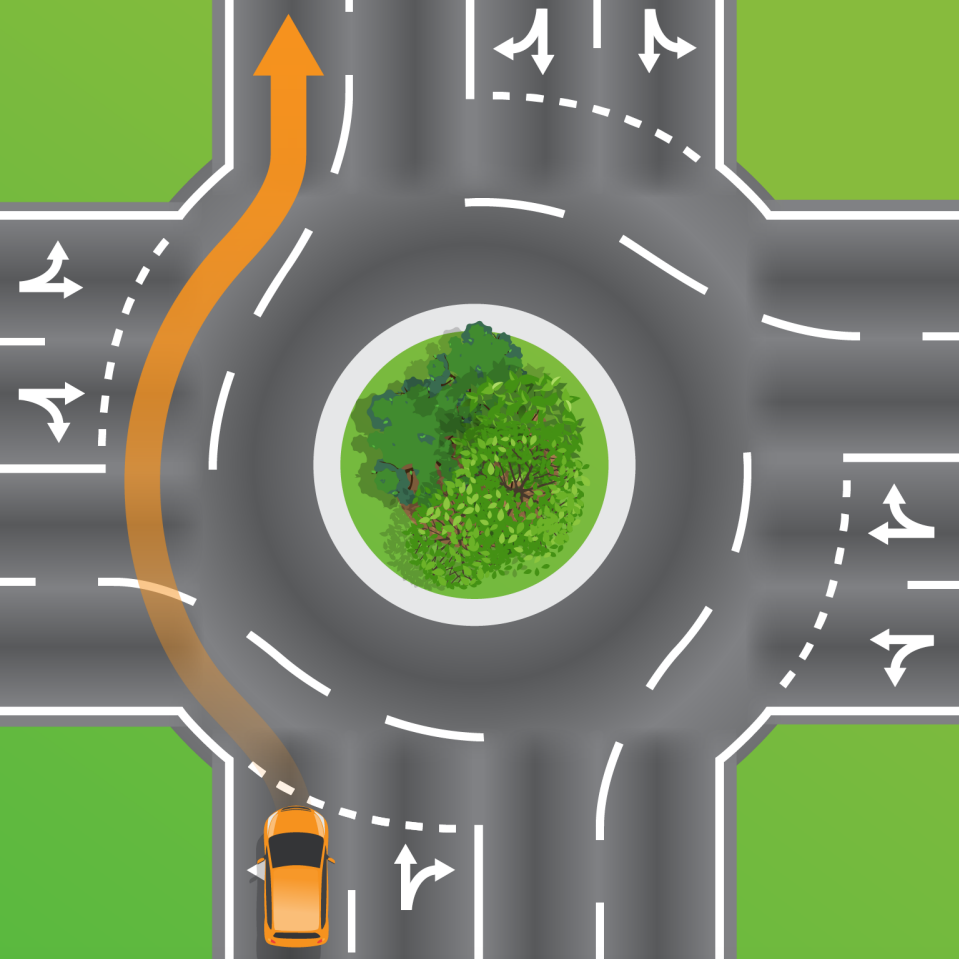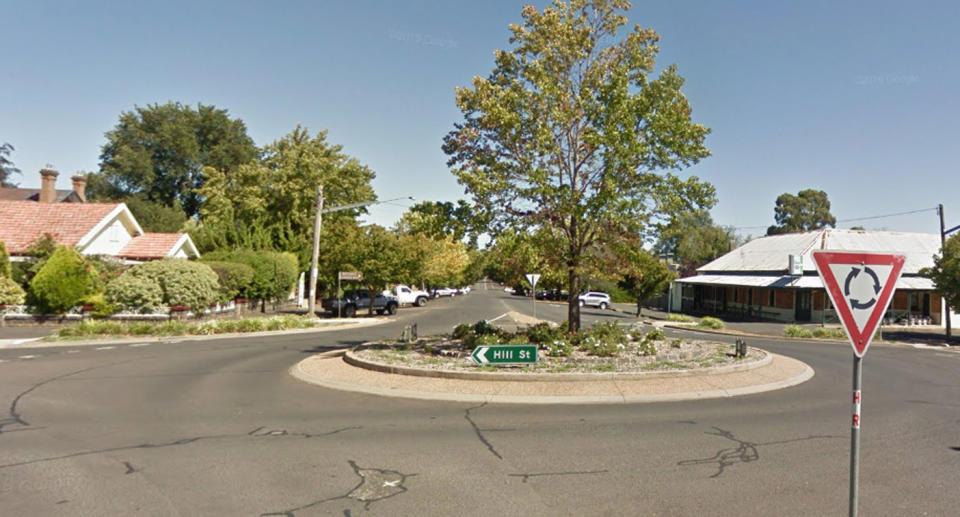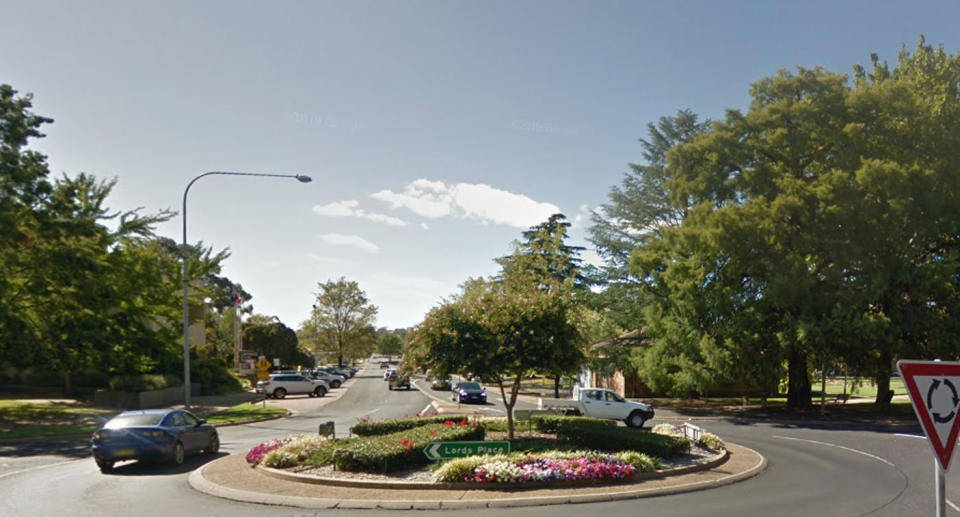Roundabout road rules: The dos and don'ts for each state
Roundabouts are a seemingly simple concept, but they can be cause for frustration for drivers across Australia on a daily basis.
From people failing to indicate appropriately or being in the wrong lane to make their turn, there’s a plethora of ways drivers can go wrong while entering and exiting a roundabout.
Adding to any confusion is the fact each state has its own set of rules, so even those who think they have mastered the art of the circular road junction should think twice before taking on a roundabout in another jurisdiction.
NSW roundabout rules
When approaching a roundabout, drivers in NSW must use their indicator if they intend to turn left or right, or make a U-turn at the roundabout, and make sure they are giving other drivers enough notice of their intentions.
Entering a roundabout: Drivers must slow or stop to give way to any vehicle already using it, then indicate if they intend to turn left, right or make a U-turn.
Turning left: Drivers must indicate accordingly on approach and be travelling in the left-hand lane, that is unless road markings state otherwise.
Going straight: When going straight through there are no requirements for drivers to signal as they approach. In this case, drivers can generally approach the roundabout from either the left or right lane, unless there are road markings with other instructions.

Turning right: Drivers need to indicate right on approach and be travelling in the right-hand lane, unless road markings say something different.
Making a U-turn: Similarly, people using a roundabout to execute a U-turn need to approach it in the right lane and signal right.
Changing lanes: Changing lanes while using a NSW roundabout is permitted, but drivers need to be mindful they adhere to regular road rules for changing lanes, by using their indicator and giving way to any vehicle in the lane they are entering.
Exiting the roundabout: Like on any normal road, motorists should signal left when leaving a roundabout, but only if it is safe, and they should stop indicating as soon as they exit the roundabout. If a driver is heading straight through a small single lane roundabout however, it might not be practical to signal left when exiting.
Victoria roundabout rules
Entering a roundabout: You must give way to every vehicle already using it, but unlike in NSW, you must also give way to trams entering or approaching as well. If there are pedestrians trying to cross a road at a roundabout, vehicles don’t need to give way to them unless there is a specific crossing.
Turning left: Drivers should signal left on approach and continue until they have left the roundabout. If there’s more than one lane in the roundabout, drivers need to approach and stay in the left lane if they’re turning left.

Turning right: Drivers must signal right on approach, then if practical, indicate left just before exiting and continue to do so until having fully exited. If there’s more than one lane going into the roundabout, drivers must approach and remain in the right lane.
Going straight: Drivers heading straight through should stay in the same lane as they make their way through, and don’t need to indicate as they approach.
Exiting: It’s only necessary to signal left on exit if it is practicable, and if there is more than one lane, drivers can approach using any of the lanes, unless road markings or signs indicate otherwise.
Bike riders: Those riding either a bicycle or a horse have the option of turning right from the left lane, but must give way to other vehicles exiting the roundabout before turning and exiting.
South Australia roundabout rules
In South Australia, drivers should generally try to keep to the left of the centre island in the instance of single-lane and multi-lane roundabouts.
Entering a roundabout: Drivers should decide which exit they will leave via as they approach a single lane roundabout, a left or right signal should be used depending on the driver’s intended turn.
Going straight: If they intend to drive straight through, drivers don’t need to use a signal as they approach.
When it comes to approaching a multi-lane roundabout, drivers must behave in the same way, but position their vehicle in the correct lane before reaching the roundabout.

Making a U-turn: If drivers want to use the roundabout to perform a U-turn, they should stick to the right light and indicate the entire way around until they have exited.
Drivers should always give way to vehicles already using the roundabout, and pay close attention to vehicles approaching or looking like they’re about to enter from the right.
Bike riders: Bike riders can turn right from the far left lane if there are multiple lanes, providing they give way to vehicles exiting the roundabout. Likewise, drivers should also makes sure they look out for bike riders stopped in the left lane giving way to exiting vehicles.
Western Australia roundabout rules
Going straight: In the same way as every other state and territory, drivers heading straight through a roundabout in Western Australia don’t need to indicate when approaching it. They just need to ensure they are obeying the directional arrows on the road, and that they always give way to vehicles already using the roundabout.
Entering and exiting: Drivers heading straight through or turning right don’t need to indicate as they approach, and can enter using either the left or right lane, but must stay in the same lane until exiting.
Turning left: Indicating on approach is essential for drivers turning left, who also need to stay in the left lane until they exit. If practicable, they should indicate left when they pass the last exit before the one they intend on using.

Overtaking: Drivers are allowed to overtake while using the roundabout, but they must indicate and give way to other vehicles.
Bike riders: Cyclists should stay in the centre of their chosen lane when using a multi-lane roundabout, but stick to the left if there’s only one lane. Motorists should be aware of cyclists using the roundabout at the same time as them, and should never try and squeeze past or overtake them.
Northern Territory roundabout rules
When in the Northern Territory, drivers should always follow signs, lane markings and arrows for each roundabout they use.
Turning left or right: Unless arrows indicate otherwise, drivers need to use the left lane and signal left if that’s the way they’re turning, and use the right lane while signalling right if that is their intended turn.
Going straight: People heading straight ahead can use either the left or right lane, but need to make sure they’re giving way to vehicles already using the roundabout. Generally they should stay in the same lane as they travel through.
It’s not necessary to signal when approaching if a driver is going straight ahead, they just need to pay attention to road markings that may instruct them to stay in either the left or right lane.
Making a U-turn: Drivers using a roundabout for the purpose of a U-turn need to approach in the right lane, signal right, and stay in the same lane until they exit.

Vehicles should always signal left when they are leaving the roundabout, including drivers travelling straight through, unless it is not practical to do so.
Bike riders: Bike riders are allowed to turn right from the left lane, but they must give way to all vehicles leaving the roundabout from the same exit.
Cyclists should adhere to the same rules for slowing down, giving way and signalling for both single lane and multi-lane roundabouts.
Australian Capital Territory roundabout rules
If a driver is leaving a roundabout less than half way around it in the Australian Capital Territory, they need to enter and stay in the left lane until they exit.
Turning left: When they’re turning left, they should indicate on approach and and continue signalling throughout the turn.
Crash at confusing roundabout divides opinion – but there's a simple explanation
Road rule challenge confuses drivers and sparks fiery debate online
Drivers leaving the roundabout more than halfway around it - like in a U-turn or right turn - must enter the roundabout from the right lane.
Turning right: When approaching a multi-lane roundabout with the intention of turning to the right, drivers should approach in the right lane and signal right until they approach their exit, then indicate left before turning.
Going straight: Drivers travelling straight through the roundabout don’t need to indicate on approach, but should, if practicable, signal left when leaving the roundabout.
Bike riders: People riding bikes or animals should stay to the far left of the left lane while in a roundabout with two or more lanes, and must give way to any vehicle leaving the roundabout.
Tasmania roundabout rules
Turning left: Drivers turning left should indicate on approach, stay in the left lane, and continue signalling until they have exited the roundabout when in Tasmania.
Turning right: The same applies for people turning right, however they must enter and stay in the right lane – in the instance of a multi-lane roundabout – unless road markings say something different.
Entering the roundabout: All drivers entering the roundabout should slow down on approach and give way to any vehicle already using it.

Going straight: There are no rules requiring drivers to signal when approaching a roundabout if they are going straight through, and they can approach in either the left or right lane.
Exiting: When exiting, drivers should signal left when they’re leaving, but only if it is practical to do so. They should also stop indicating as soon as they have exited.
In the instance of a single-lane roundabout, it might not be practical to indicate when exiting.
Changing lanes: Drivers are allowed to change lanes in a roundabout, so long as they adhere to regular rules for changing lanes, and should always give way to any vehicle in the lane they are entering.
Making a U-turn: U-turns should be done while in the right lane and signalling right throughout the turn.
Queensland roundabout rules
Entering a roundabout: All cars approaching a roundabout in Queensland must give way to vehicles already using it, which is consistent with rules in every other state and territory.
Turning or going straight: Similarly, if drivers want to turn left, they should use the left lane, use the right lane to turn right, and use any lane to go straight ahead - unless arrows indicate otherwise.
Indicators should be kept on until the vehicle exits the roundabout, and be switched off immediately after leaving.
Turning right: Cars making a right turn should always use the right lane – never the left – to perform their manoeuvre, and switch their right indicator to left just before exiting.
Turning left: Drivers turning left should always do it from the left lane, and keep their signal on until they have exited.
Going straight: Vehicles driving straight through the roundabout don’t need to indicate before entering, but should signal left when they are ready to exit.
Do you have a story tip? Email: newsroomau@yahoonews.com.
You can also follow us on Facebook, Instagram and Twitter and download the Yahoo News app from the App Store or Google Play.



